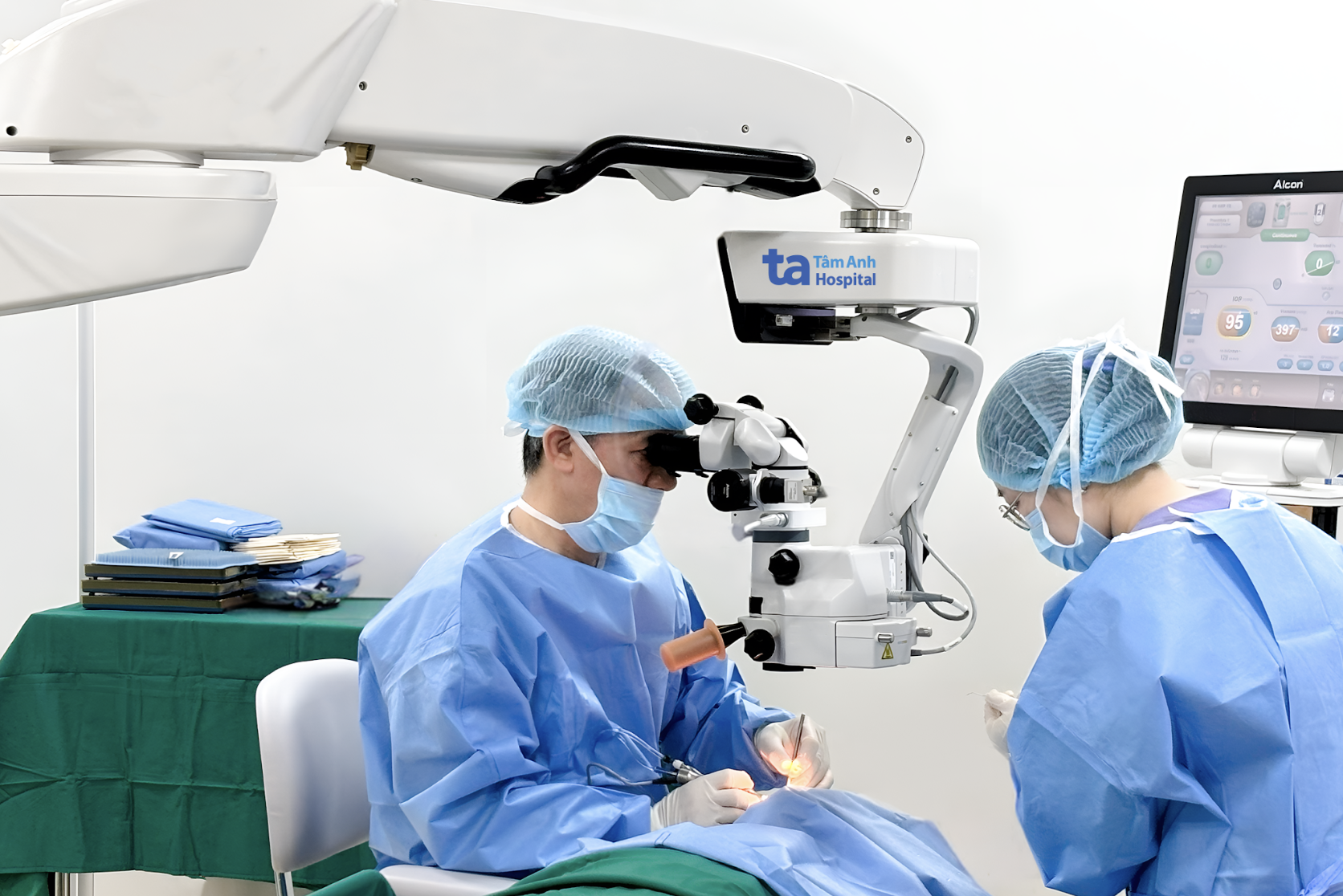Answer:
A person can typically undergo cataract surgery once per eye in their lifetime. Current artificial lenses are designed to maintain clarity indefinitely. Unless complications arise or there are special circumstances, one surgery is sufficient.
Cataracts are a common eye condition in older adults, typically appearing after the age of 60. However, they can also occur in younger individuals due to congenital factors, trauma, complications from previous eye surgeries, or other eye diseases. In the early stages, cataracts develop gradually, and corrective lenses or medication may be enough. But when cataracts significantly impair vision, surgery to replace the natural lens with an artificial one may be recommended to restore sight.
 |
A doctor performing cataract surgery. Photo: Tam Anh General Hospital |
A doctor performing cataract surgery. Photo: Tam Anh General Hospital
Cataract surgery is a common and safe procedure that can significantly improve vision. The clouded natural lens is removed and replaced with a clear intraocular lens (IOL). Modern IOLs are designed to remain clear for life, without deteriorating, being rejected by the body, or developing cataracts like natural lenses.
In rare cases, a second surgery might be needed to adjust or replace a previously implanted IOL. Common reasons include displacement or misalignment of the IOL, intraoperative or postoperative posterior capsule rupture, or weakening of the lens's supporting ligaments (often seen in individuals with severe myopia or previous eye trauma). A dislocated IOL can cause blurred vision, double vision, glare, or increased intraocular pressure, requiring intervention to reposition or replace it with a more securely fixated IOL.
Another reason for a second surgery is a significant refractive error after the initial procedure, leading to unsatisfactory vision or difficulty adapting to glasses. This can occur in individuals who have had prior refractive surgery (LASIK, PRK), have corneal irregularities, or whose axial length was difficult to measure accurately before the first surgery. If glasses, additional surgery, or a secondary lens implant cannot correct the issue, replacing the IOL might be necessary.
While rare, a chronic inflammatory reaction to the IOL material may necessitate replacement with a more biocompatible lens. Some individuals experience glare, halos, or light sensitivity, especially with multifocal IOLs, that cannot be resolved over time. In such cases, switching to a monofocal IOL might improve vision quality.
A second cataract surgery is considerably more complex than the first. Ideally, a single surgery is sufficient, provided there is accurate diagnosis, appropriate IOL selection, and timely intervention. You should take your mother to a hospital with an ophthalmology department for a screening and preoperative consultation before cataract surgery. This will minimize the need for further interventions and ensure long-term visual quality after the procedure.
MSc. MD Tang Ngoc Anh
Deputy Head of Ophthalmology Department, High-Tech Eye Center
Tam Anh General Hospital, Ho Chi Minh City
| Readers can submit questions about eye diseases here for doctors to answer. |












